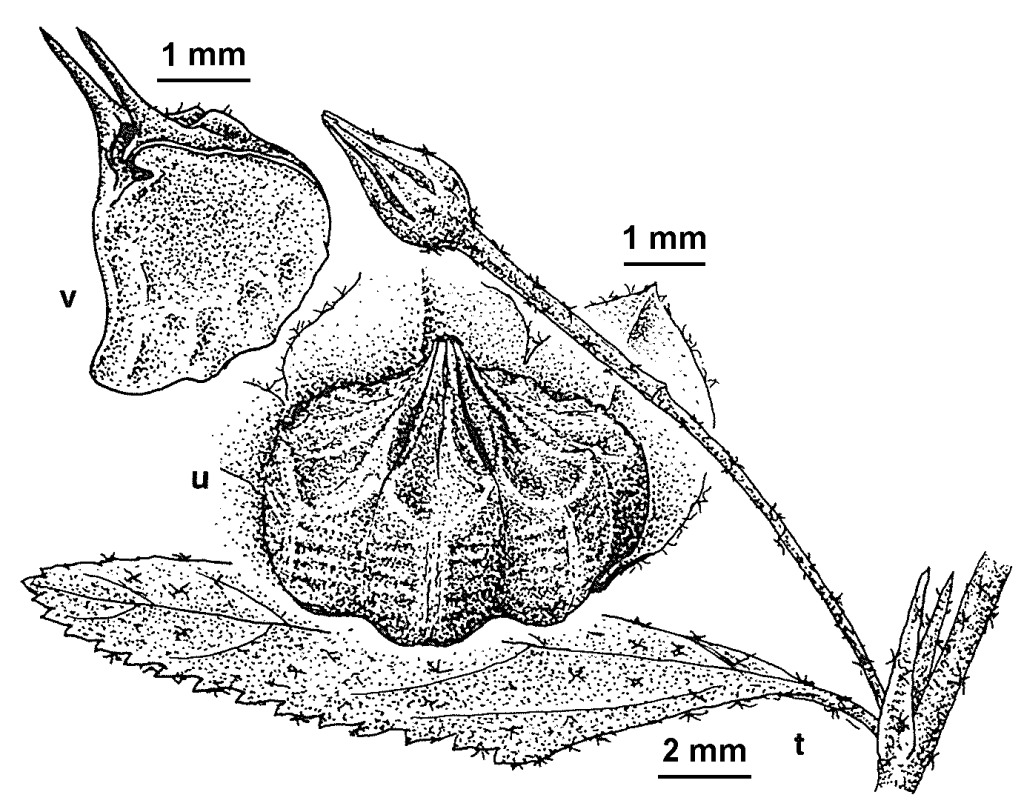Sida rhombifolia
L. Paddy's LucerneUpright subshrub 30–200 cm high; branchlets with dense, minute stellate hairs. Leaves ovate to obovate, or rhombic, 15–90 mm long, 5–30 mm wide, cuneate or rounded at base; margins serrate apically, entire basally; surfaces dark green, subglabrous above, pale below and densely stellate-hairy; stipules 3–6 mm long. Flowers solitary; pedicel not exceeding leaves; calyx basally 10-ribbed, divided to c. midway; lobes 2–2.5 mm long; petals spreading, truncate, c. 6 mm long; styles 9–11. Fruit transversely elliptic, 4.5–5.5 mm diam., ± smooth, sparsely puberulent, abruptly tapered to a raised central portion; mericarps 2.5 mm high, faintly reticulate on lateral wall, splitting widely in 2 at apex, each apex with 0.8 mm long awn. Flowers mostly summer or autumn but later if conditions are warm and moist.
VRiv, MuF, GipP, CVU, EGL. Also naturalised WA, NT, Qld, NSW (declared noxious in NT). Weed of tropical and subtropical areas of the world. A weed of cultivation in Kerang and Swan Hill area, channel banks and creeks in the Kotupna area. It has also been collected as a minor weed in garden beds at the Royal Botanic Gardens in Melbourne and Molesworth.
Sida rhombifolia is the type species of the genus Sida. It is a very polymorphic species across its world range, and the variation is taxonomically unresolved. Verdcourt (2005) recognised six varieties for East African populations, based on mericarp morphology. No infraspecific taxa are currently recognised in Australia.
Barker, R.M. (1996). Sida. In: Walsh, N.G.; Entwisle, T.J., Flora of Victoria Vol. 3, Dicotyledons Winteraceae to Myrtaceae, pp. 340–345. Inkata Press, Melbourne.
 Spinning
SpinningVercourt, B. (2005). The variation of Sida rhombifolia L. (Malvaceae) in East Africa. Kew Bulletin 59(2): 233–239.



